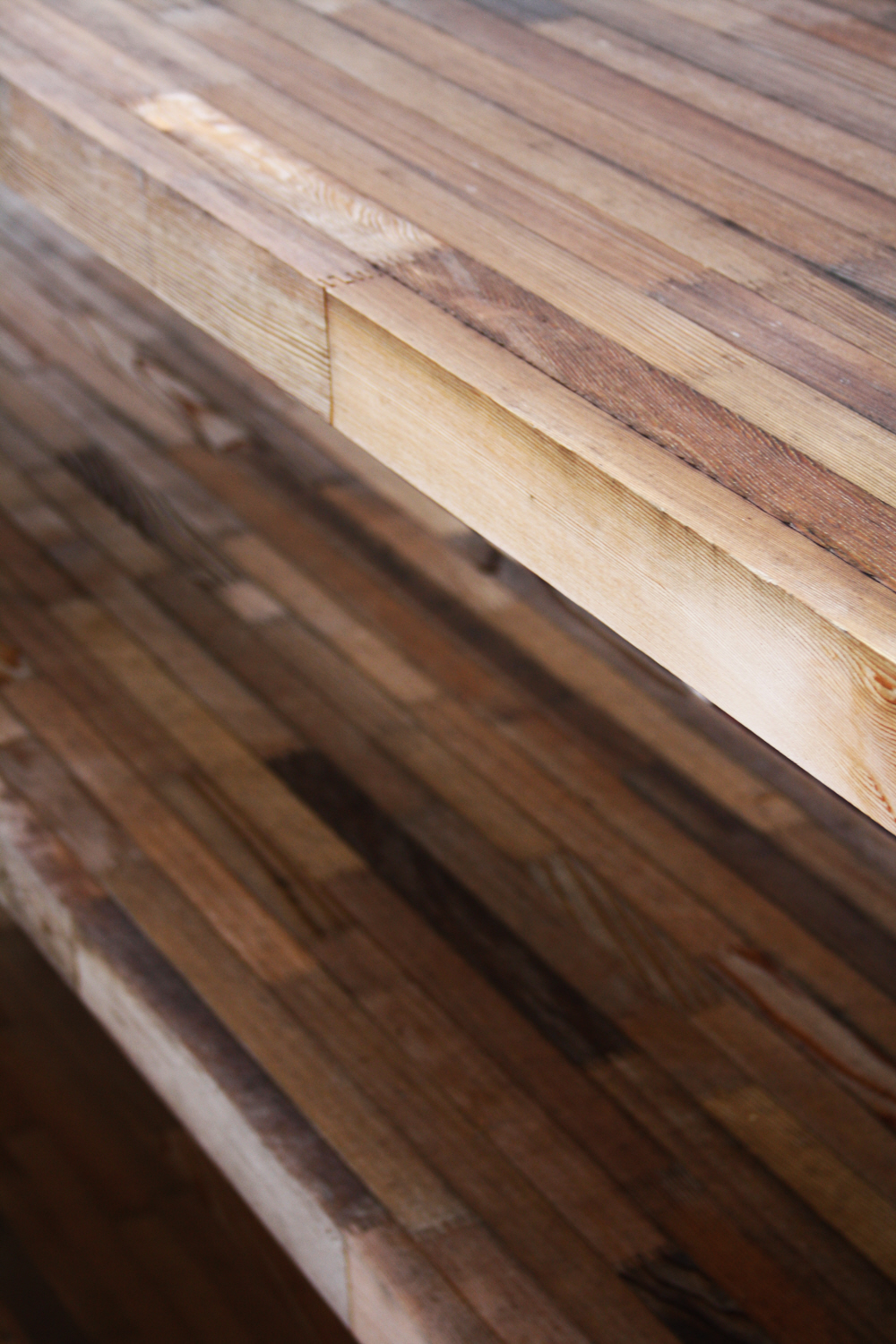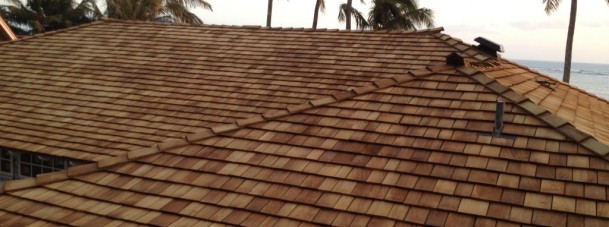The Properties of Cedar Wood
Image: Red cedar (image supplied by Simons Group - see Cheshire Oaks: Marks and Spencer).
Contents |
Introduction
Cedar is a type of coniferous wood, meaning that it is classified as a softwood and its cones/needles remain all year round. Cedar trees fall under the Cedrus genus and the Pinaceae family, which is the family of trees that is coniferous.
Only a couple of species of Cedrus exist in the world, but they exhibit certain traits that make them very popular.
Locations of Cedar
Cedar is particularly common in the western Himalayas and areas that surround the Mediterranean Sea. According to botanists, there are four types of cedar:
- Cedrus deodara – The deodar cedar – Western Himalaya.
- Cedrus libani – The Lebanon cedar – Lebanon and Turkey.
- Cedrus brevifolia – The Cyprus cedar - Cyprus.
- Cedrus altantica – The Atlas cedar – Morocco and Algeria.
These are the natural locations of the different species of cedar, but not the only places they can be found. In fact, the cultivation of cedars around the world has been very successful. Cedars can now be found around the entire Mediterranean region, western Europe, Australia, New Zealand, and North America.
Description of Cedar
Cedars are naturally found at high altitudes; over 1,500m in the Himalayas, and 1,000m in the Mediterranean.
Compared to a tree within the same family, such as pine, cedars are generally quite small. They typically grow to around 35m, but larger in some circumstances. They have a natural spicy scent, thick bark, and broad branches. The leaves of a cedar are needle-like and can grow up to 6cm long.
Uses of Cedar
Cedar wood and cedar oil are natural moth repellents, which is why cedar is commonly used for creating modern-day hope chests and closets that contain woollen clothes.
There are some types of cedar located in North America that are lightweight but also durable and highly stable. Because of this, it is used as wood shingles, which are tapered pieces of wood that clad roofs and walls to protect them from harsh weather.
Various types of cedar have a beautiful colour associated with them, but they are also resistant to warping and cracking, making them perfect for musical instruments. Instruments such as Spanish classical guitars and occasionally steel string guitars are made from cedar, however the type of cedar that is used is known as Western Red Cedar, which isn't a true cedar, such as the ones aforementioned.
Because of its resistance to warping, cedar can also be used for interior panelling in rooms around the house.
--G&S Specialist Timber 12:01, 13 Mar 2017 (BST)
Related articles on Designing Buildings Wiki
- 11 things you didn't know about wood.
- Aurora Log Homes.
- Bamboo.
- Bordeaux Law Courts.
- Cheshire Oaks: Marks and Spencer.
- Chip carving.
- CIBSE Case Study Olympic Velodrome.
- Cross-laminated timber.
- Definition of tree for planning purposes.
- Engineered bamboo.
- European Union Timber Regulation.
- Forest Stewardship Council.
- Natural materials.
- Pine wood.
- Pine leaves.
- Plywood.
- Programme for the Endorsement of Forest Certification.
- Scunthorpe Sports Academy.
- Shingles.
- Softwood.
- The Scientific Properties of Wood.
- Timber.
- Timber preservation.
- Timber vs wood.
- Tree preservation order.
- Tree rights.
- Types of timber.
- Walnut.
- Best Woods for Wood Carving
- Physical Properties of Wood
- The Differences Between Hardwood and Softwood
Featured articles and news
RTPI leader to become new CIOB Chief Executive Officer
Dr Victoria Hills MRTPI, FICE to take over after Caroline Gumble’s departure.
Social and affordable housing, a long term plan for delivery
The “Delivering a Decade of Renewal for Social and Affordable Housing” strategy sets out future path.
A change to adoptive architecture
Effects of global weather warming on architectural detailing, material choice and human interaction.
The proposed publicly owned and backed subsidiary of Homes England, to facilitate new homes.
How big is the problem and what can we do to mitigate the effects?
Overheating guidance and tools for building designers
A number of cool guides to help with the heat.
The UK's Modern Industrial Strategy: A 10 year plan
Previous consultation criticism, current key elements and general support with some persisting reservations.
Building Safety Regulator reforms
New roles, new staff and a new fast track service pave the way for a single construction regulator.
Architectural Technologist CPDs and Communications
CIAT CPD… and how you can do it!
Cooling centres and cool spaces
Managing extreme heat in cities by directing the public to places for heat stress relief and water sources.
Winter gardens: A brief history and warm variations
Extending the season with glass in different forms and terms.
Restoring Great Yarmouth's Winter Gardens
Transforming one of the least sustainable constructions imaginable.
Construction Skills Mission Board launch sector drive
Newly formed government and industry collaboration set strategy for recruiting an additional 100,000 construction workers a year.
New Architects Code comes into effect in September 2025
ARB Architects Code of Conduct and Practice available with ongoing consultation regarding guidance.
Welsh Skills Body (Medr) launches ambitious plan
The new skills body brings together funding and regulation of tertiary education and research for the devolved nation.
Paul Gandy FCIOB announced as next CIOB President
Former Tilbury Douglas CEO takes helm.
UK Infrastructure: A 10 Year Strategy. In brief with reactions
With the National Infrastructure and Service Transformation Authority (NISTA).


























Comments
Hello,
Just wanted to let you all know that you have a picture of Red Cedar on this page, then your description of cedars mentions only the genus Cedrus, of which Red Cedar is not a member. Red cedar is not a "true" Cedar and is not in fact even in the pineceae family. It is in the Cupressaceae or "Cypress" family where most trees North Americans consider to be "Cedar" reside. I'm curious, where does "Cedar" lumber in North America come from? Which tree? North America has no native or naturalized true cedars so is wood here marked "Cedar" all Juniper? That is the answer I was looking for when I came to this site, it seems hard to find online.
Dylan Linet
[email protected]
Thank you for your observation. We suggest you contact the original author of this article, G&S Specialist timber. Please refer to their profile page (found here: G&S Specialist Timber) for contact information.
Editor, Designing Buildings Wiki